Fast Facts
Scientific name: Balaenoptera acutorostrata
Class: Mammalia
Average length: Up to 35 feet. Females are typically larger than males.
Average weight: 10 tons
Average lifespan: Up to 50 years
Current population: About 636 off the U.S. West Coast. No estimates have been made for the entire North Pacific.
Gestation period: 10 to 11 months
Minke Whales: Dive Deeper
Waters off of Dana Point, California, play host to one of the most abundant and unique baleen whales of its whale species. This extraordinary marine mammal is referred to as the minke whale, Balaenoptera acutorostrata. These rorquals are the smallest members of the great whales. Minke is commonly pronounced as mink-ee, and was named after a Norwegian sailor named Meincke. Supposedly this inexperienced whaler thought he saw a blue whale (the largest whale), when in fact he found the smallest! In addition to its unique name, it sports up a slew of fun facts that have us giving two fins up.
Appearance
Many people ask what does a minke whale look like and how big is a minke whale, but it’s important to first note that there are two main species of minke whales; The northern or common minke whale and the Antarctic minke whale. In addition, the dwarf minke whale, which is a subspecies of the northern or common minke whale, is also considered a prime player in this whale arena.
Their size and appearance vary between each species, especially in regard to their geographical location.
The northern or common minke whale is a relatively small and dark-colored rorqual with a sleek body. It reaches lengths of up to 35 feet and weighs in at 20,000 pounds. Its sleek body is dark gray and brown with a white belly side. Atop its dark back, it has a slightly tall and sickle-shaped dorsal fin which rests about two-thirds of the way down its back. Near this dorsal fin, it’s dressed up with a pale-colored chevron shape that sits above the flippers and behind the head. Apart from other large whales, this whale has a set of distinctive white bands around the middle of their pectoral flippers.
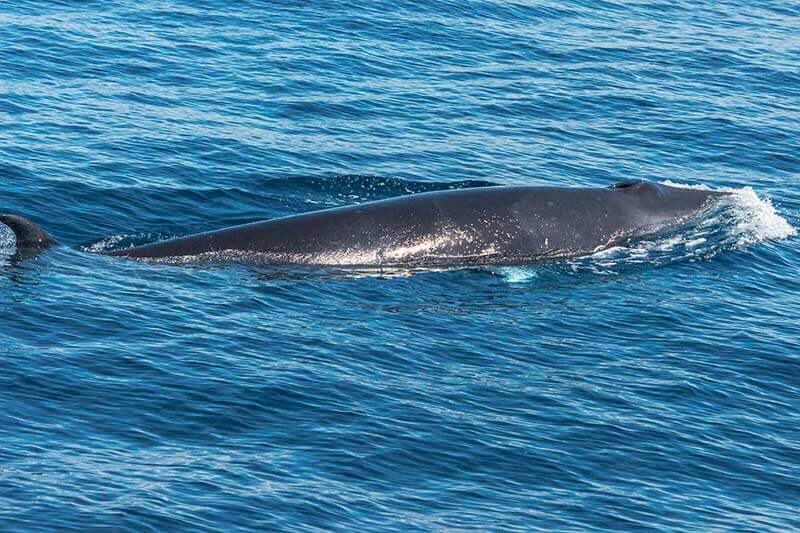
These distinct white bands are also present on the dwarf minke whale which measures in at around 26 feet and weighs nearly 14,000 pounds. Dwarf minke whales are dark in color, with a half-collar that reaches around the head and stretches to the throat grooves. Distinguished from other minke whales, this particular subspecies has a bright white patch on its upper pectoral fin which extends to the back and shoulder area.
The Antarctic minke whale is also generally dark-colored, with solid gray pectoral flippers that have a white-colored edge. Different from other minke whales, the antarctic species does not have the distinctive white bands that are present on the common northern minke whale and dwarf minke whale.
Feeding Habits
Each subspecies of a minke whale is glammed up with a grill of 200 – 300 baleen plates on each side of their mouth. The colors of these plates range from white/cream on the common minke and dwarf whale with the exception of a thin black border on the dwarf’s plates. The Antarctic minke whale is a bit different from its close relatives, as the coloration of its baleen plates are asymmetrical, and it has more plates on the right than on the left.
These incredible baleen plates are used for feeding, where the whales cruise on their side as they gulp up large amounts of water and schools of prey. Because they are a rorqual whale, they use their 50 – 70 ventral pleats to hold a large assortment of menu picks. They feed on krill, small schooling fish such as anchovies, herring, capelin, dogfish, cod, salmon, sand lance, wolfish, and saury, as well as other delicacies such as crustaceans and plankton.
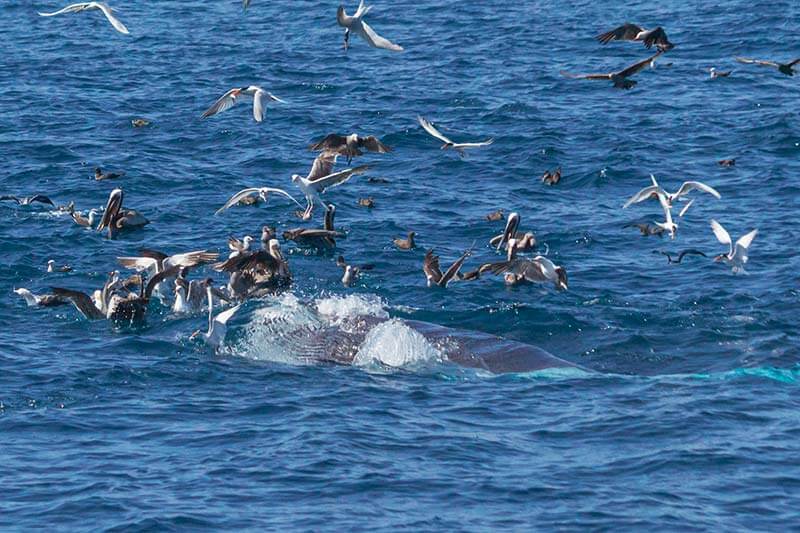
Where are minke whales found?
Minke whales are considered both cultured and cosmopolitan as they can be found roaming the oceans in polar, tropical and temperate waters. Depending on the subspecies stock, gender, and members, these whales can be either “long term” residents in certain locations or take part in the minke whale migration. For example, Minke whales along the west coast of the United States are considered “residents” as they establish home residents in the waters of California, Oregon, and Washington, whereas minke whales in the Alaska area are migratory due to mating and feeding habits.
Northern common minke whales have a large distribution in the Northern hemisphere and are spotted in the northern Atlantic and Pacific oceans. This distribution covers the ice edge in the Arctic during the summer months to near the equator in the winter months.
The dwarf minke whale is found near the polar region in the Southern hemisphere in the summer months but can be more commonly found in warm temperate waters of middle and lower latitudes such as Australia, South America, and South Africa.
The Antarctic minke whales share the same home turf as the dwarf minke whale, swimming about in the Southern hemisphere.
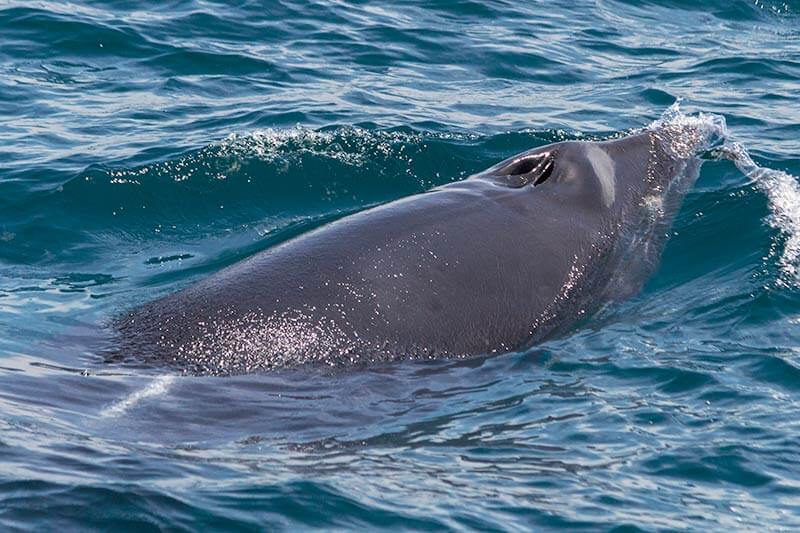
Minke Whale Mating and Calves
When it comes to mating and reproduction ventures, the minke whale reaches sexual maturity between 3 to 8 years of age, right around the time they reach lengths of 23 feet. Their mating and calving take place during the winter months. Mother minke whales have a gestation period of 10 to 11 months and then give birth to a single calf that weighs up to 1,000 pounds and stretches to lengths of nearly 12 feet. These whales can celebrate up to fifty birthdays as their lifespan spans nearly five decades.
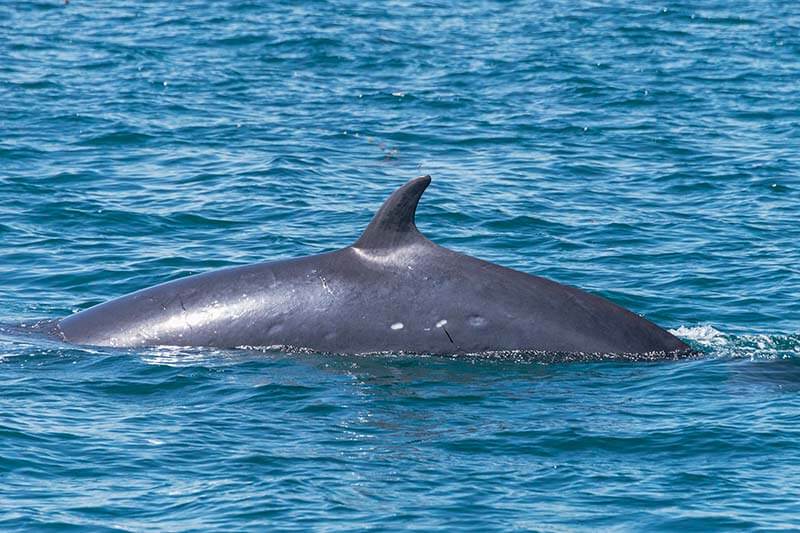
Are minke whales endangered?
The minke whale is one of the most abundant rorquals whales in the world, but this was not always the case. Due to commercial whaling in the western North Pacific and the northeastern North Atlantic areas, their numbers may have dropped to as much as half. They are protected under the Marine Mammal Protection Act, but according to the international whaling commission, they recognize two stocks in the North Pacific as being of concern. These stocks include the J-stock and the O-stock. Gratefully, this concern does not classify the minke whale as being endangered, but sadly these whales are still hunted in countries such as Japan, Iceland, and Norway.
Why are minke whales hunted? Minke whales were first hunted for their meat and blubber, and often because they were mistaken for larger whales. In fact, they received their name from a Norweigan novice spotter named Meincke, who mistakenly thought a minke whale was a blue whale. Because of the overhunting of larger whales such as blue, fin, and sei whales in the early 1970s, minke’s have become a more appealing target for whaling. Although the heartbreaking reality of whaling is still present, the minke whale population reaches over 500,000 worldwide.
These numbers remain stable despite whaling and natural predators such as the killer whale, which somewhat resembles the minke in both size and coloration.
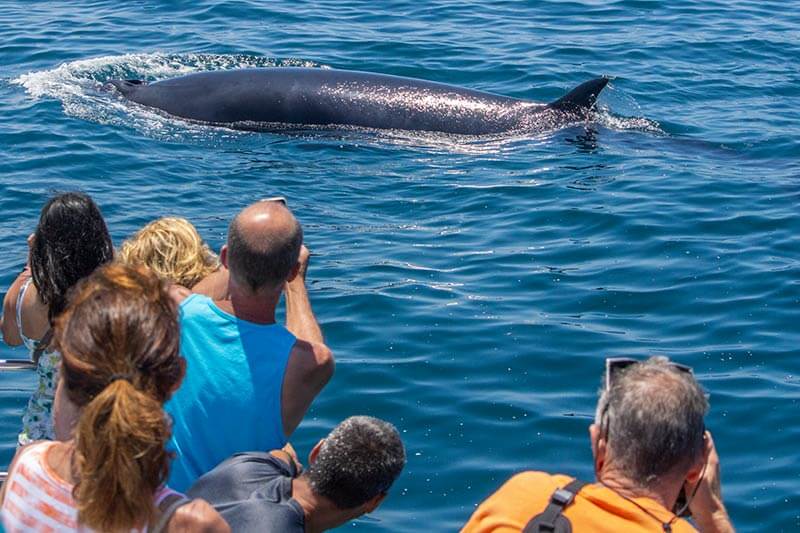
Minke whales are a year-round visitor in the Dana Point, California area. Because of their high-speed travel and swimming habits, they do not spend much time at the surface, making them a peculiar performer for our whale watching passengers. Thankfully, several individuals can often be eager and outgoing around boats, as they will come over and swim close to our vessels, often referred to as “mugging.” Occasionally, they can also be found breaching out of the water, giving curious onlookers a memory they won’t soon forget.
For the opportunity to catch a glimpse of these remarkable mammals, feel free to come aboard any of our daily, year round, dolphin and whale watching safari’s where we will do our best to get you up close and personal with these incredible sea creatures.
